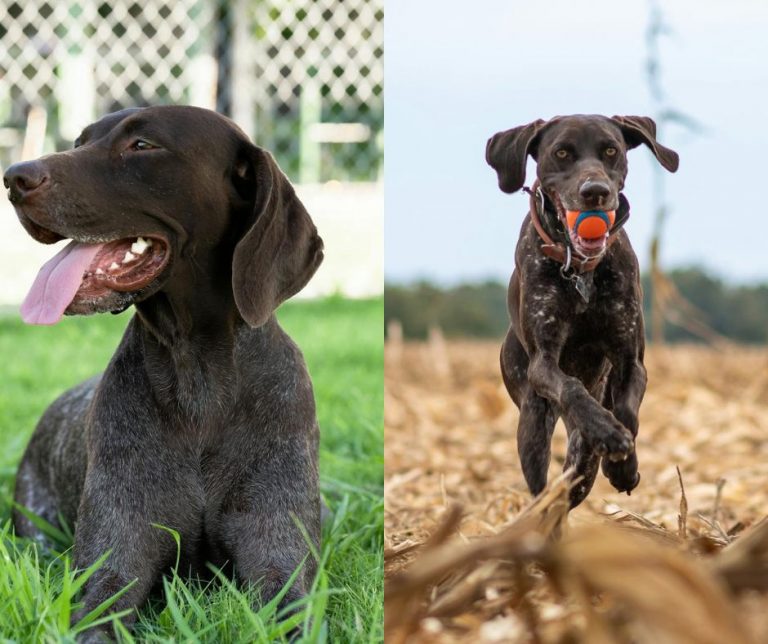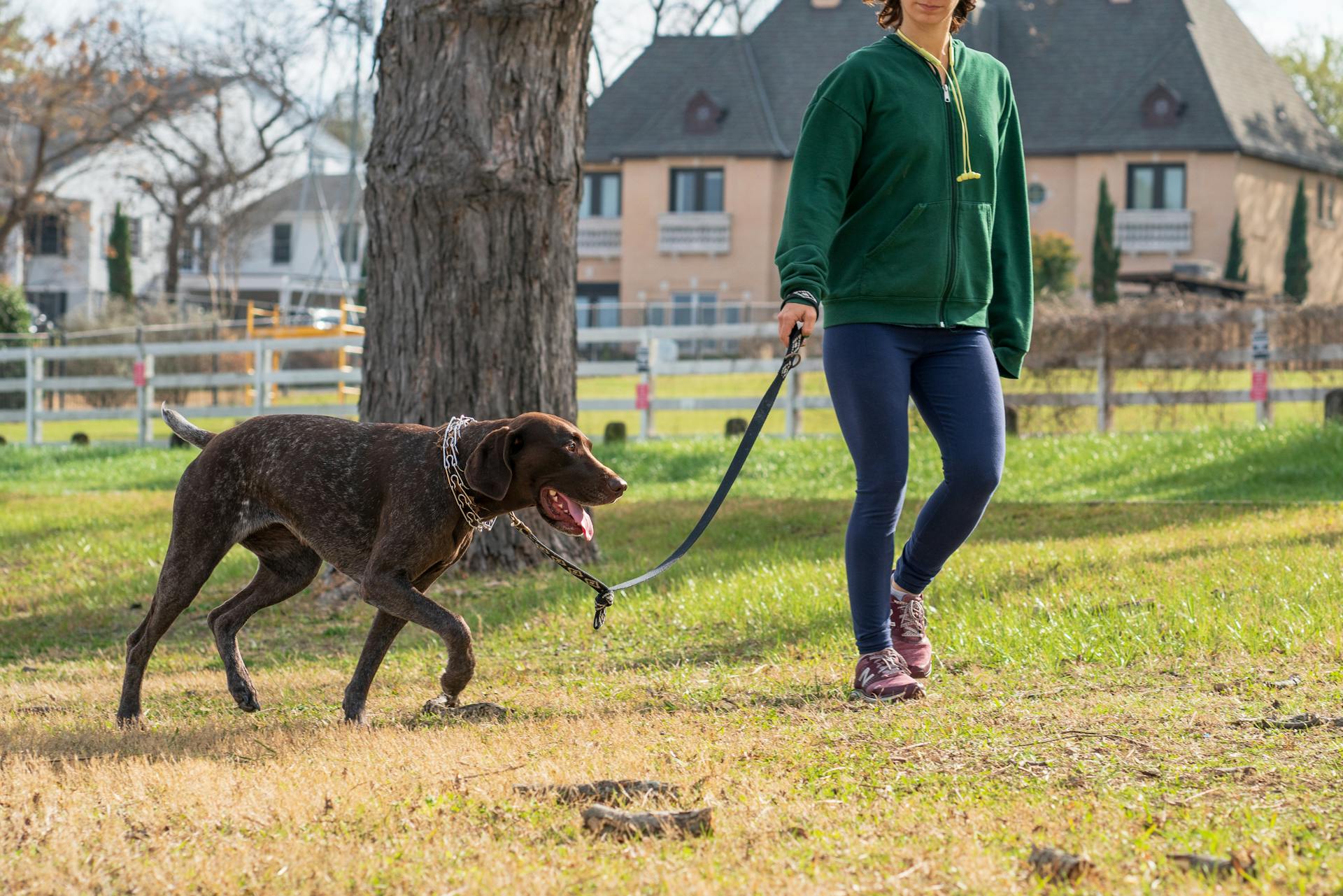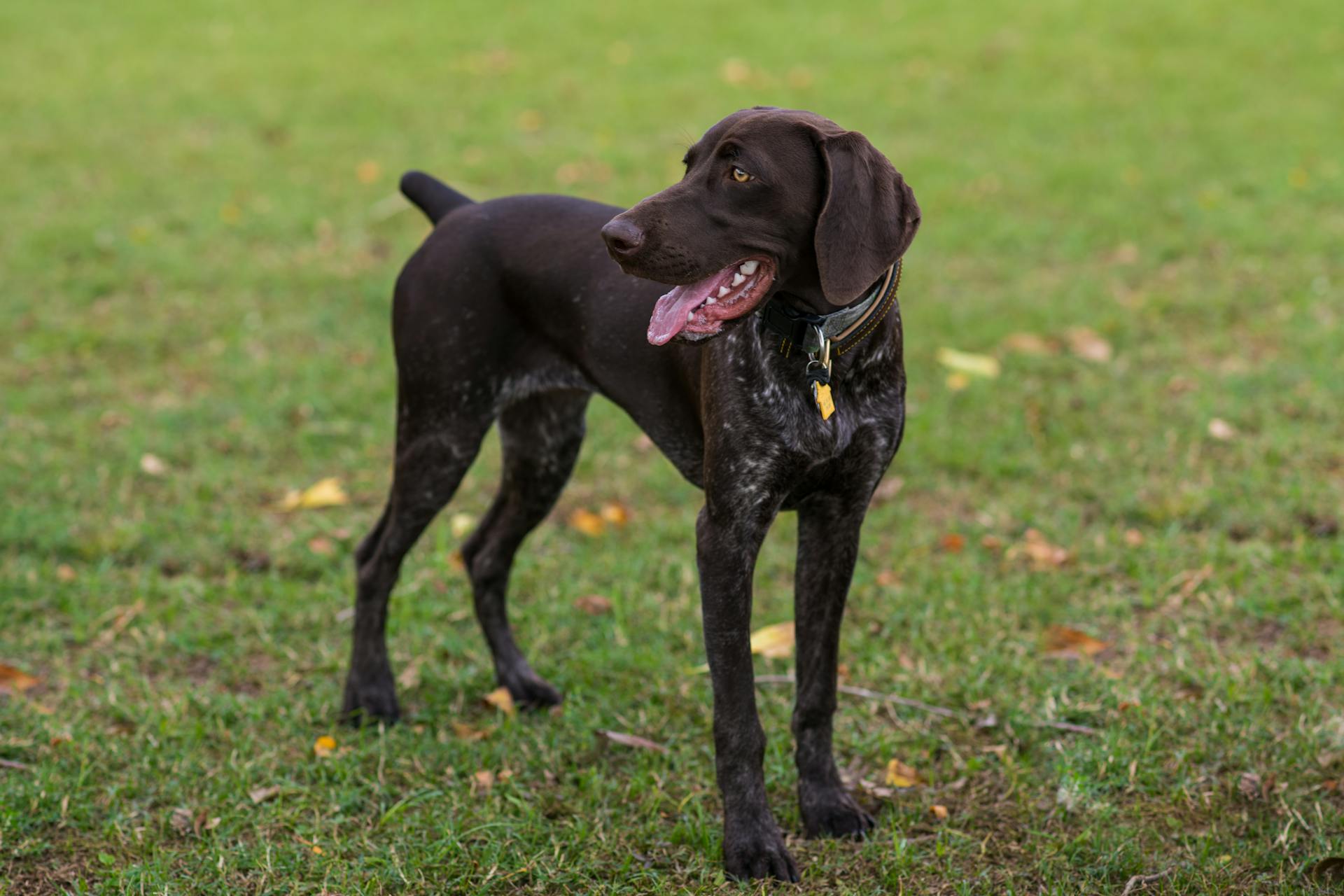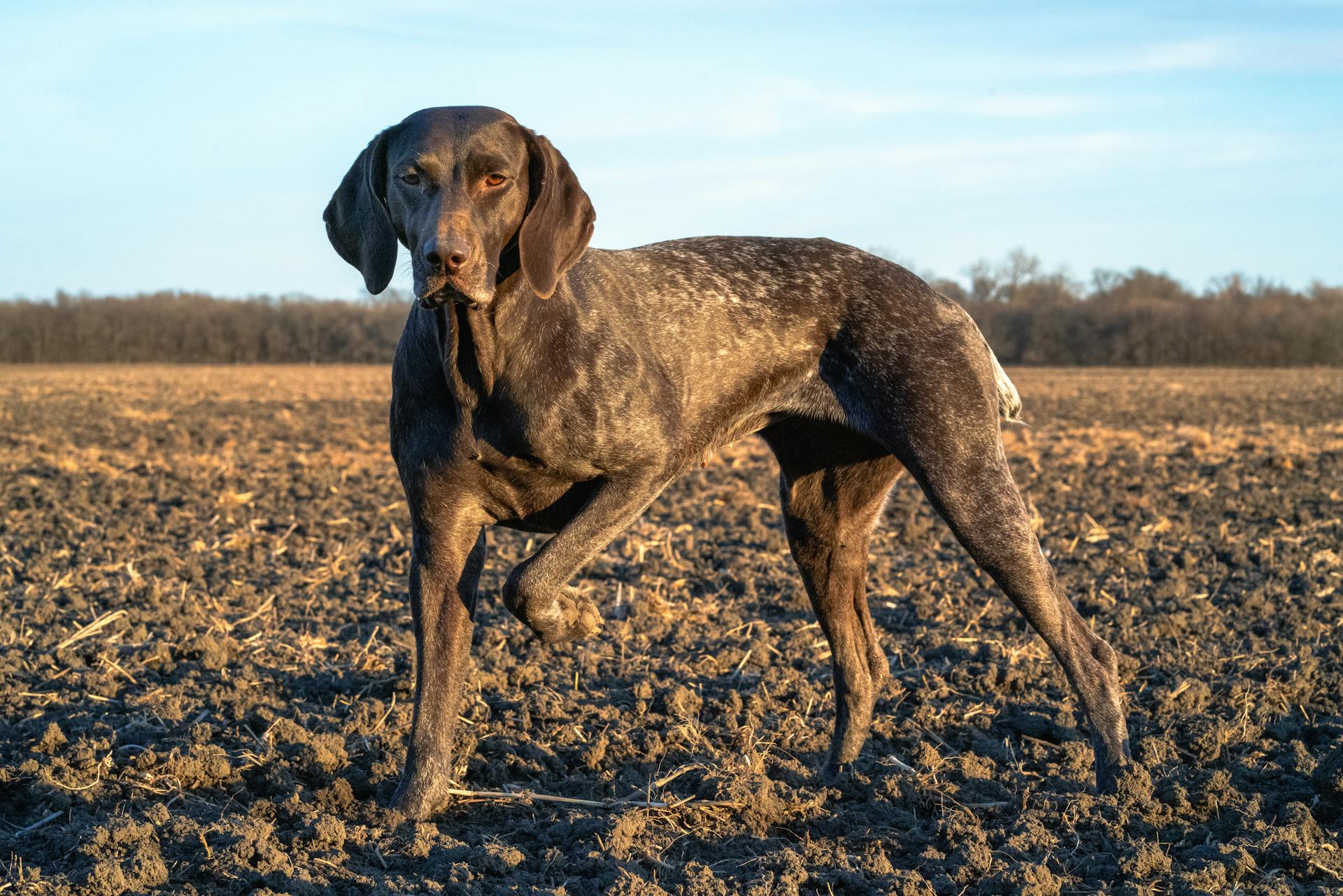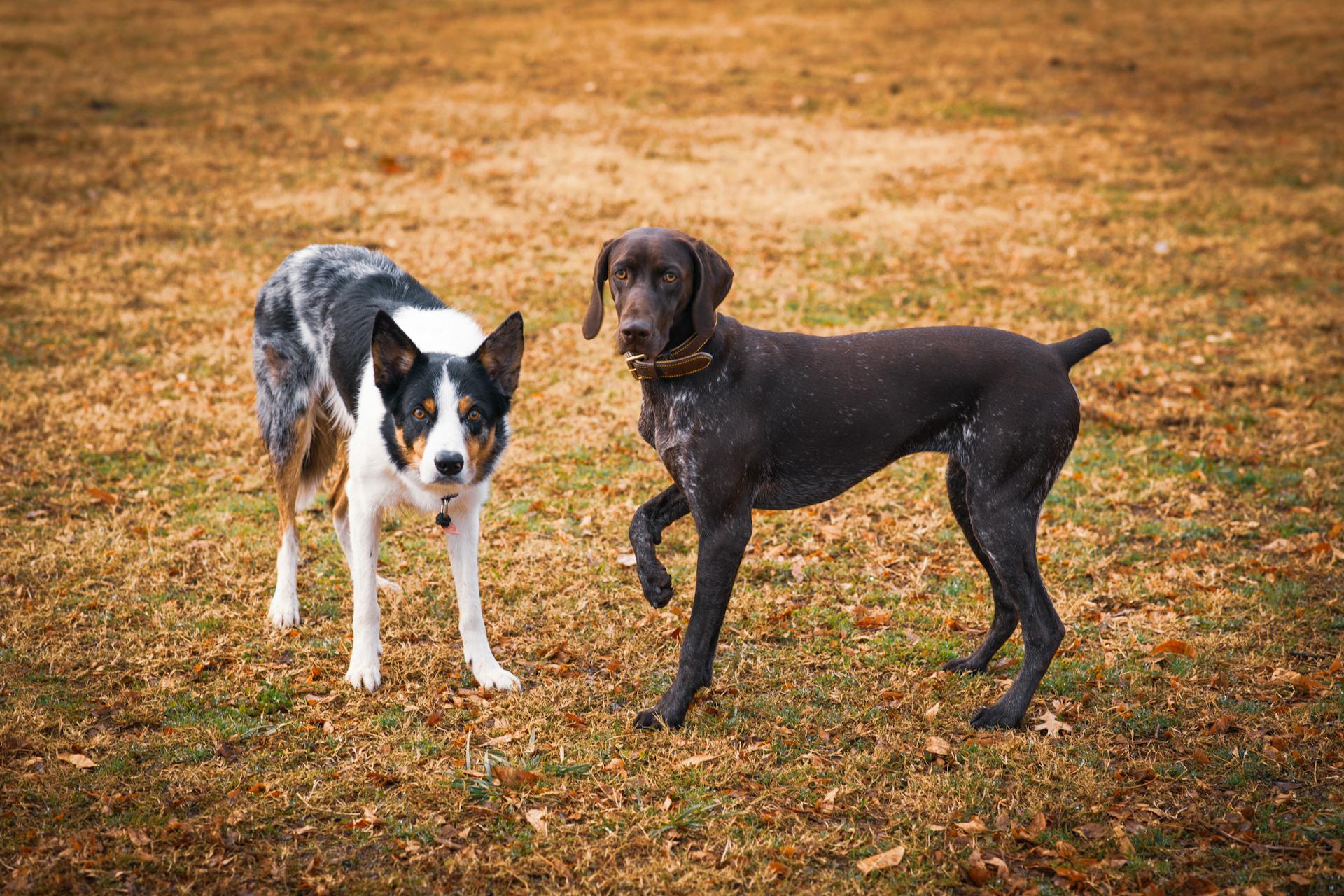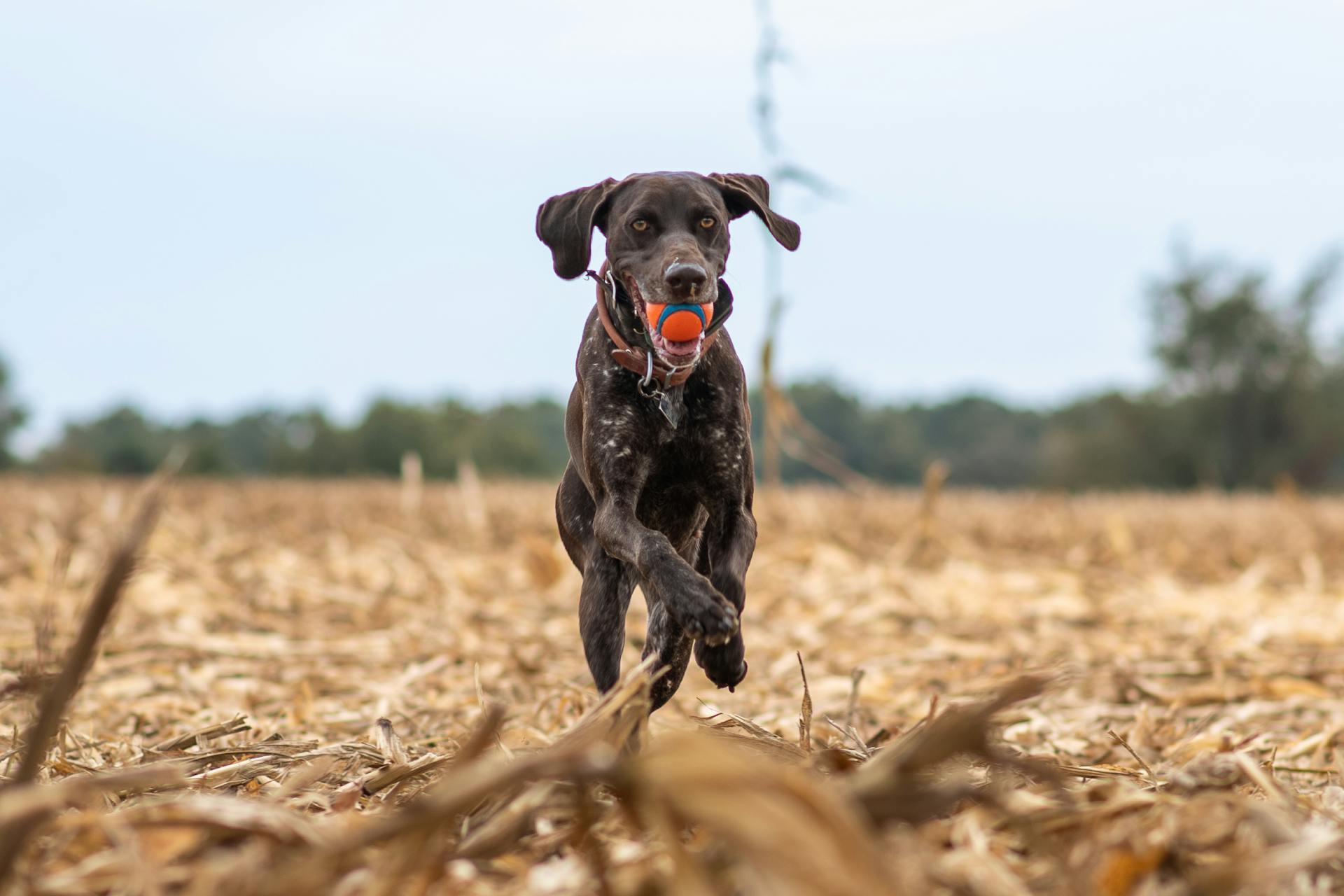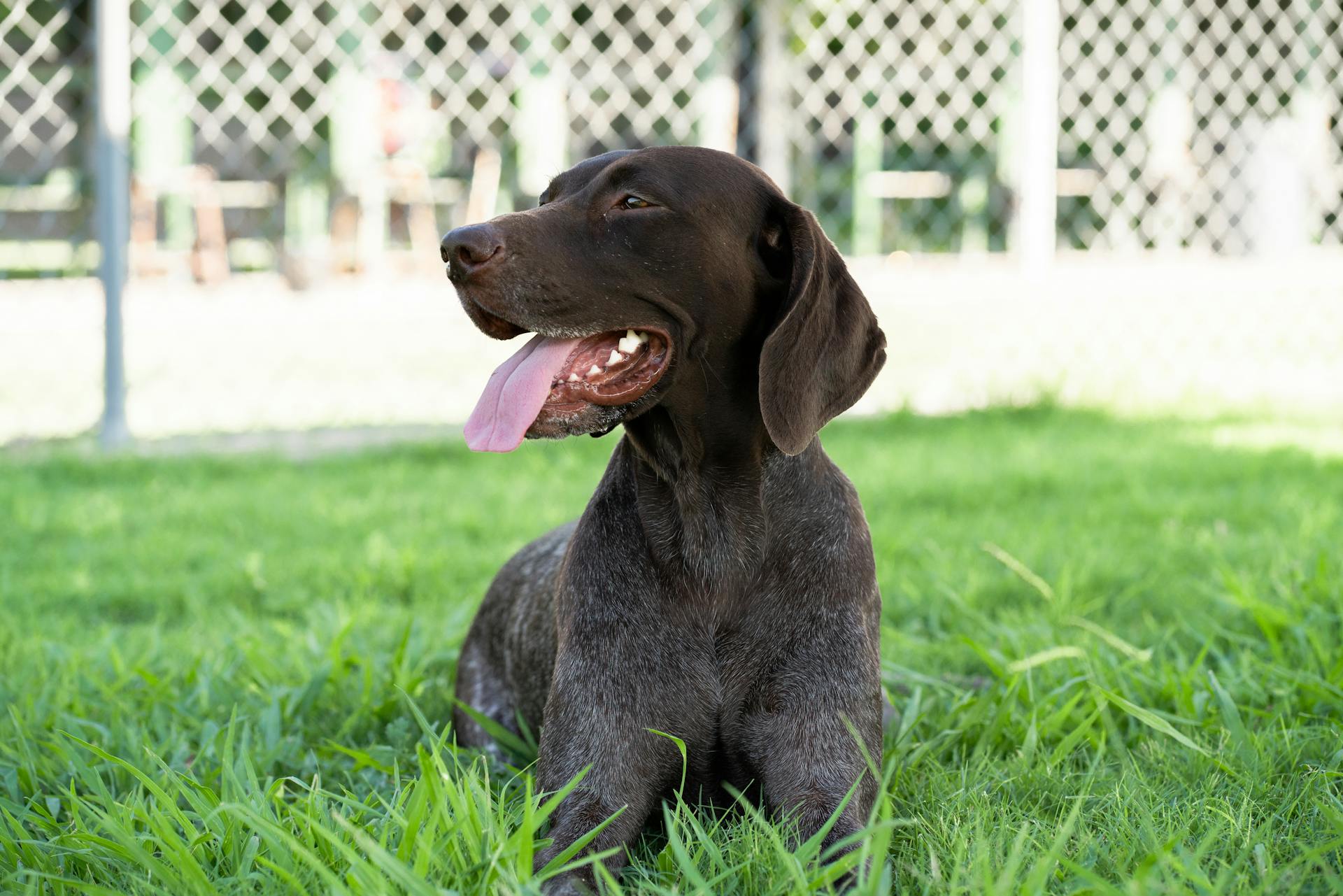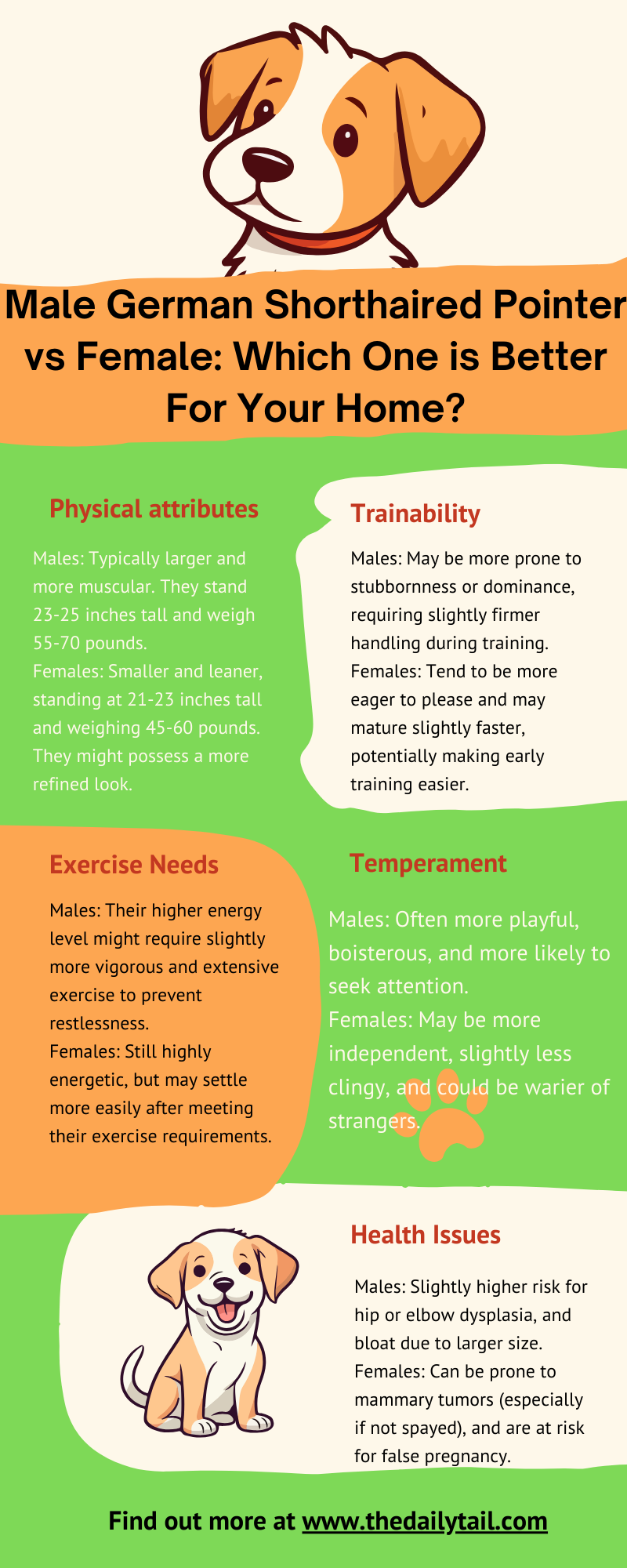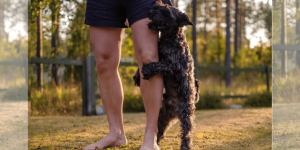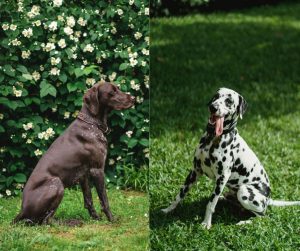When considering the addition of a German Shorthaired Pointer (GSP) to the family, one might wonder whether there are any significant differences between males and females.
Picture this: your couch is a GSP launching pad, your shoes are chew toys, and love drool is a fashion accessory. Sound like fun? Then a GSP is for you! Now, let’s talk about whether your home is ready for a male or female version of this amazing chaos
Known for their athleticism, intelligence, and friendly nature, German Shorthaired Pointer dogs make excellent companions for active households.
Despite sharing a breed standard, male and female GSPs do exhibit some distinct characteristics worth considering before making a decision.
Male GSPs tend to be larger with a heavier build, more pronounced musculature, and thicker necks compared to their female counterparts.
While the males may present a more imposing figure, their size can translate to higher energy levels and strength.
On the other side, female GSPs are generally smaller, with a lighter frame and may possess a more subtle approach in their interaction with family and during dog training sessions.
Choosing between a male German Shorthaired Pointer vs female GSP may come down to personal preference, the space available, and the potential owner’s lifestyle and expectations from their four-legged companion.
Key Takeaways
- Male GSPs are larger and more muscular, while females are generally smaller and lighter
- Female GSPs often mature faster and may have calmer temperaments compared to males
- The choice between male and female GSPs should consider the future owner’s activity level, training commitment, and space available
Breed Overview
German Shorthaired Pointers, commonly referred to as GSPs, are known for their versatility as hunting dogs and their friendly nature.
This overview will touch upon their origins and key breed characteristics, giving you a clear picture of what makes these dogs special.
Origin and History
The German Shorthaired Pointer dog breed’s roots trace back to 19th-century Germany. They were bred for hunting, a result of crossing Spanish Pointers with local German hounds and tracking dogs.
These skilled hunters were valued for their keen sense of smell, intelligence, and versatility in working both on land and water. When looking at their appearance, you can say they are quite similar to their cousins, the German Wirehaired Pointer. The main difference is coat structure.
Timeline:
- 19th Century: Originated in Germany
- Versatile Hunters: Bred to hunt and track a variety of game
Breed Characteristics
Physical Traits:
- Male GSPs
- Height: 23-25 inches
- Weight: 55-70 pounds
- Female GSPs
- Height: 21-23 inches
- Weight: 45-60 pounds
GSPs exhibit an impressive balance of strength, speed, and endurance. Their keen intelligence and trainable temperament make them excellent companions and working dogs.
They have a strong personality that often shows a friendly, enthusiastic, and affectionate nature, thriving on interaction with their human companions.
These traits, coupled with their sporting agility, have kept the breed popular both as family pets and as versatile field dogs. According to the American Kennel Club, the German Shorthaired Pointer dog breed is among the top 30 in popularity.
Male German Shorthaired Pointer vs Female Physical Differences
When deciding between a male German Shorthaired Pointer vs female GSP puppy, it’s important to understand that they both share a strong resemblance but also display distinct physical differences.
An appreciation of these differences can help potential owners select a pet that best fits their lifestyle and preferences.
Size and Weight
Male German Shorthaired Pointers
- Height: Typically 23 to 25 inches
- Weight: Usually ranges from 55 to 70 pounds
Female German Shorthaired Pointers
- Height: Slightly shorter at about 21 to 23 inches
- Weight: Tends to fall between 45 to 60 pounds
Males generally have a more robust build with considerably more muscle mass, giving them a more masculine appearance.
Females, conversely, are often more streamlined with a svelte appearance due to their lighter build.
Coat Color and Grooming
The coat of a German Shorthaired Pointer puppy, irrespective of gender, is short and thick, providing good protection in rough terrain.
Grooming needs for both males and females are relatively low maintenance due to their short fur, which requires only occasional brushing to keep it clean and reduce shedding.
- Shedding: Both males and females shed, but regular grooming can help manage this
- Coat colors: Both genders share the same range of coat colors, which predominantly include combinations of liver (a rich brown color), and white, which may present in solid or speckled patterns
Understanding the grooming requirements and shedding tendencies is crucial for any potential owner who values household tidiness or may have allergy concerns.
Regular grooming fosters a healthy coat and provides a wonderful opportunity to bond with your dog, regardless of their gender.
Behavioral Traits
German Shorthaired Pointer dogs, known for their friendly and affectionate nature, are excellent family pets. They exhibit variations in temperament based on their gender, which can influence their behavior within a family setting and their interactions with children and other pets.
Temperament Towards Family
German Shorthaired Pointers are highly sociable with their human families. Male dogs are often perceived as more playful and affectionate, diligently seeking attention and interaction.
They may display a more boisterous nature, which resonates with a family environment filled with activity.
On the other hand, female dogs tend to be more focused and may exhibit stronger bonding with one particular family member.
Females are generally known to mature faster, which can impact their need for companionship and attention from their human counterparts.
Interaction with Children and Other Pets
When it comes to kids, these canines are usually gentle and patient. Both male German Shorthaired and female German Shorthaired Pointer dogs can be great playmates for children, provided they are properly socialized from a young age.
However, due to their size and energy, supervision is always recommended with smaller kids to prevent accidental knocks or bumps.
Regarding other pets, German Shorthaired Pointers usually coexist peacefully with other canine companions, especially if raised together.
They may have a higher prey drive, so careful introduction and monitoring are necessary when it comes to smaller pets like cats or rodents.
The females might show less dominance issues compared to males, who sometimes try to establish a pecking order.
It’s essential to socialize them early on to foster positive pet-to-pet relationships and reduce any potential aggression.
Training and Trainability
When it comes to training German Shorthaired Pointer dogs (GSPs), one should consider the breed’s overall intelligence and energy levels. These aspects significantly impact how training should be approached for both males and females.
Intelligence and Focus
GSPs are a smart breed, capable of learning quickly. They often show an eagerness to please, which facilitates faster learning during training sessions.
Training should include:
- Name recognition: GSPs respond well to learning their names early on
- Basic commands: Commands like ‘sit’, ‘stay’, and ‘come’ are easily grasped
Both male and female GSPs can be equally focused during training if they are given the proper attention and guidance.
It’s important to remember that their intelligence demands mental stimulation to stay sharp and satisfied. Like other pointing dog breeds, the German Shorthair Pointer is quite intelligent, yet wants plenty of exercise. Some other pointer dogs in the same group are the Irish Setter and English Pointer.
Training Challenges
Training GSPs comes with a set of challenges due to their high energy and need for high-intensity exercise. Here’s a brief look at what to expect:
- Energy Levels: Both males and females possess high energy, requiring regular, vigorous exercise
- Attention Span: Their need for activity means that trainers need to keep sessions engaging to maintain their attention span
While not inherently aggressive, unfocused energy can lead to challenging behaviour, so early socializing and consistent training help in developing a friendly and respectful demeanor.
Their love for play and attention should be integrated into training methods to keep them interested and happy.
Exercise and Activity Levels
German Shorthaired Pointers, both male and female, are beloved for their energy and playfulness. They are athletic dogs that thrive on exercise, making them an ideal match for active families.
Exercise Needs
German Shorthaired Pointers are known for their high energy levels and need for regular exercise.
They require at least one to two hours of high-intensity exercise daily to maintain their health and happiness.
This breed is not one to be content with just a leisurely walk; they seek activities that challenge them both mentally and physically.
A game of fetch, a run in the park, or participation in dog sports like agility can meet a German Shorthaired Pointer’s exercise needs.
Their inherent prey drive also makes them natural hunters, meaning they enjoy activities like tracking or simulated hunting games.
- Daily exercise requirement: 1-2 hours
- Ideal activities: Running, fetch, agility sports, hunting
Suitability for Active Families
German Shorthaired Pointers fit seamlessly into active family life as they’re as playful as they are energetic.
Whether it’s a hike, a camping trip, or a day at the lake, these dogs are always game for an adventure and thrive in environments where they can expend their energy.
For families that lead a high-energy lifestyle, both male and female German Shorthaired Pointers make enthusiastic companions.
While their jowls may give the males a more robust look, both sexes share a similar zest for life and require ample daily exercise to keep them from becoming restless.
Health and Care
When we talk about German Shorthaired Pointers, we’re discussing a breed with a zest for life that pairs with a need for careful health management.
Their spirited nature demands tailored nutrition and proactive care to tackle any health problems they might face.
Common Health Issues
German Shorthaired Pointers are generally healthy, but like all dog breeds, they can encounter certain health issues.
Hip dysplasia is one such concern. It’s a genetic condition where the thighbone doesn’t fit snugly into the hip joint, potentially leading to arthritis or lameness.
Both males and females can be affected, and responsible care requires screening for this and other joint diseases. Another area of focus is regular veterinary checks to monitor their overall health and catch any breed-specific issues early.
- Hip Dysplasia
- Joint Diseases
Health differences between male and female German Shorthaired Pointers aren’t stark, but it’s worth noting that each sex may have particular needs during different life stages.
Their lifespan typically ranges 12 to 14 years, so long-term health maintenance is key to a happy life.
Diet and Nutrition
The dietary needs of German Shorthaired Pointers are founded on a balance of protein, fats, and carbohydrates, specifically tailored to support their active lifestyle and maintain their muscle mass.
A diet rich in nutrients helps guard against common health issues and supports overall well-being.
When you’re planning meals for these pups, keep a close eye on portions and quality:
- Protein: Supports muscle maintenance
- Fats: Provides energy
- Carbohydrates: Sustains activity levels
For puppies, the diet should support growth without pushing them to grow too quickly, which can be harmful to their developing joints.
Adult dogs will benefit from consistency and measurement to avoid obesity, while seniors may need adjustments for slower metabolisms and less activity.
Remember, for specific guidelines, it’s always best to consult with a veterinarian.
Ownership Considerations
When choosing between a male and female German Shorthaired Pointer (GSP), prospective owners should consider the different living needs and cost implications of each. Understanding these factors will ensure the pooch matches the lifestyle of its potential home.
Living Needs
Male GSPs often stand 23 to 25 inches tall and weigh between 55 to 70 pounds, typically presenting a more muscular and heavier build than females.
This size difference means they might require more space and possibly higher exercise.
In contrast, females might be more suitable for slightly smaller living spaces, but they also need sufficient exercise to match their high energy levels.
Both genders are known to be affectionate and form strong loyalty bonds with their families, making them excellent family pets.
They’re good with children and can be a fun addition for active families.
Males may display more vigilant traits, using their bark to alert owners.
On the other hand, females, while still alert, could be less prone to barking.
Neither sex is typically known to be aggressive; however, proper dog training and socialization are key for a well-adjusted pet, especially for first-time owners.
When other pets are in the household, early socialization can help both male and female GSPs adapt better.
Cost of Ownership
The initial cost for a GSP puppy can vary widely.
A female GSP puppy’s price ranges between $1,400 and $5,500. This can depend on factors such as breeder reputation, location, pedigree, and demand.
Apart from the purchase cost, maintenance expenses such as food, healthcare, training, and grooming must be considered. Below is a simple breakdown:
- Food: Both carry similar costs, though males might eat slightly more due to their size
- Grooming: Their short, low-maintenance coat requires weekly brushing and regular ear cleaning to prevent infections
- Healthcare: Costs can increase if any inherent breed-specific health issues like Progressive Retinal Atrophy (PRA) arise
- Training: Budget for professional training to mitigate any unwanted behaviors
Breed Comparisons
When choosing a German Shorthaired Pointer (GSP), prospective owners often wonder about the differences between males and females. Both bring unique qualities to the table, especially in terms of size, behavior, and performance in dog sports and competitions.
Male vs Female GSP
Size and Build:
- Male GSP: Typically larger, with heights of 23 to 25 inches and a weight range of 55 to 70 pounds. They have a visibly muscular frame, heavy jowls, and a thicker body
- Female GSP: Generally more slender, standing at 21 to 23 inches tall and weighing around 45 to 60 pounds, with a lighter, more streamlined build
Temperament:
- Male German Shorthaired Pointer: Known for their eagerness to please, they can sometimes display more assertiveness and protective behaviors
- Female German Shorthaired Pointer: Often more reserved and cautious, yet retain a loyal and amiable nature. Their social demeanor makes them equally affectionate
German Shorthaired Pointers in Competitions
German Shorthaired Pointers, with their high intelligence and athleticism, excel in various canine sports.
However, there are subtle differences between the genders that might affect competition.
Male GSPs:
- They might have a physical advantage in demanding sports since they are larger and more muscular. However, sometimes their protective instinct requires careful handling
Female GSPs:
- Their streamlined build can be a plus in agility-based competitions
- Their sometimes more reserved nature can translate to focused performance, though they should be handled with an understanding of their need for social bonds

